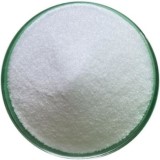|
|
|
Soda Lime ---- Sodium Acetate ---- Sodium Adipate ---- Sodium Alginate ---- Sodium Ascorbate ---- Sodium Benzoate ---- Sodium Bicarbonate ---- Sodium Bisulfate ---- Sodium Borate, Borax ---- Sodium Bromate ---- Sodium Bromide ---- Sodium Butyl Paraben ---- Sodium Butyrate ---- Sodium Caprylate ---- Sodium Chloride ---- Sodium Citrate ---- Sodium Diacetate ---- Sodium Erythorbate -- Sodium Ethyl Paraben ---- Sodium Formate ---- Sodium Gluconate ---- Sodium Glycerophosphate ---- Sodium Formaldehyde Bisulfite ---- Sodium Hyaluronate ---- Sodium Hydroxide ---- Sodium Lactate ---- Sodium Lactobionate ---- Sodium Lauryl Sulfate ---- Sodium Methyl Paraben ---- Sodium Metabisulfite ---- Sodium Molybdate ---- Sodium Nitrate ---- Sodium Nitrite ---- Sodium Oleate ---- Sodium Perborate ---- Sodium Persulfate ---- Sodium Phosphate Monobasic ---- Sodium Phosphate Dibasic ---- Sodium Phosphate Tribasic ---- Sodium Picosulfate ---- Sodium Propyl Paraben ---- Sodium Propionate ---- Sodium Saccharin ---- Sodium Selenate ---- Sodium Selenite ---- Sodium Stibogluconate ---- Sodium Sulfate ---- Sodium Sulfide Nonahydrate ---- Sodium Tartrate ---- Sodium Thiosulfate ---- Benzyl Benzoate ---- Selenious Acid |
|
NaCl, Sodium Chloride Specificatons of BP Ph Eur USP IP Analytical Reagent FCC Food Grade Manufacturers & Exporters
Sodium Chloride SDS, Safety Data Sheet Section 1 - Chemical Product and Identification Product Name & Other Names: Sodium Chloride or Common salt or Halite or Rock salt or Saline or Salt or Sea salt or Table salt. Section 2 - Hazards Identification GHS, Globally Harmonized System Classification in accordance with 29 CFR 1910 Labeling according to GHS & Regulation (EC) No 1272/2008
Signal Word: None Precautionary statements: Section 3 - Composition, Information on Ingredients Product Name & Other Names: Sodium Chloride or Common salt or Halite or Rock salt or Saline or Salt or Sea salt or Table salt. Section 4 - First Aid Measures Always seek medical advice after the first aid treatment. Eyes: Flush eyes with plenty of water for at least 15 minutes, occasionally lifting the upper and lower eyelids. Get medical aid. Section 5 - Fire Fighting Measures General Information: Water runoff can cause environmental damage. Dike and collect water used to fight fire. Wear appropriate protective clothing to prevent contact with skin and eyes. Wear a self-contained breathing apparatus (SCBA) to prevent contact with thermal decomposition products. Substance is noncombustible. Section 6 - Accidental Release Measures Personal precautions, protective equipment, and emergency procedures: Avoid breathing dust/fumes/gas/mist/vapors/spray. Use individual protective equipment (waterproof boots, suitable protective clothing, safety glasses, etc.). Restrict unprotected personnel from the area. Prevent any contact with hot surfaces. Do not approach facing the wind. Do not touch the spilled material. Section 7 - Handling and Storage Precautions for safe handling: Apply according to good manufacturing and industrial hygiene practices. Ensure proper ventilation. In case of insufficient ventilation, wear suitable respiratory equipment. Wash thoroughly after handling. Do not drink, eat, or smoke while handling. Avoid contact with skin, eyes, and clothing. Minimize dust generation. Avoid breathing dust/fumes/gas/mist/vapors/spray. Keep container tightly closed. Avoid ingestion and inhalation. Use individual protective equipment (waterproof boots, suitable protective clothing, safety glasses, etc.). Prevent any contact with hot surfaces. Section 8 - Exposure Controls, Personal Protection Exposure Limits: This product does not contain any hazardous materials with occupational exposure limits established by the region-specific regulatory bodies. There is a blanket recommendation of 10 mg/m3 for inspirable dusts or mists when limits have not otherwise been established. Section 9 - Physical and Chemical Properties Appearance: Solid. Colorless or white crystalline powder. Section 10 - Stability and Reactivity Chemical Stability: Stable. Section 11 - Toxicological Information LD50 Oral - Rat - 3,550 mg/kg (Sodium chloride) Section 12 - Ecological Information Toxicity to fish: LC50 - Lepomis macrochirus (Bluegill) - 5,840 mg/l - 96 h Section 13 - Disposal Considerations Chemical waste generators must determine whether a discarded chemical is classified as a hazardous waste. Section 14 - Transport Information Land Transport DOT USA, TDG Canada & ADR/RID Europe: Not controlled. Section 15 - Regulatory Information USA Regulations: Section 16 - Additional Information DISCLAIMER: The information and recommendations set forth herein are presented in good faith and believed correct as of the date hereof. It is compiled from various sources, and it is not necessarily all inclusive nor fully adequate in every circumstance. In addition, these suggestions should not be confused with nor followed in violation of applicable laws, regulations, rules, or insurance requirements applicable. This SDS MSDS sheet is intended only as a guide to the appropriate precautionary handling of the material by a professionally trained person using this product. Individuals receiving the information must exercise their independent judgment in determining its appropriateness for a particular purpose. This shall not constitute a guarantee for any specific product features and shall not establish a legally valid contractual relationship. In no case shall our company be liable to loss or damages by the product user. |
Crystal Clear Products and the group companies are manufacturing chemicals since several decades. We have automatic vacuum operated titanium evaporators and SS316 equipments to produce top grade of chemical products. We have toll manufacturers and representatives in China, UAE, Europe, Canada & USA and agents & customers in all countries like USA, Canada, Europe, UAE, South Africa, Tanzania, Kenya, Egypt, Nigeria, Uganda, Turkey, Mexico, Brazil, Chile, Argentina, Bangkok Thailand, Kaula Lumpur Malaysia, Dubai UAE etc. & sales representative in Chicago, Houston New York & Los Angeles, USA. Associated units are FDA-GMP certified, Halal and/or Kosher certified, REACH registered, ISO-9001, ISO-22000 HACCP certified, Crisil Rated.
Contact Sodium Chloride IP BP Ph Eur EP JP USP NF ACS Analytical Reagent FCC Food Grade manufacturers exporters at:

Crystal Clear Products
Plot No-C1-1031-9, GIDC Estate, Panoli, Ankleshwar, Gujarat - 393002. India
Telephone Mobile: 91-7506449333; e-mail: info@crystalclearproducts.org
e-mail: info@crystalclearproducts.org
Manufacturers, Suppliers of IP BP Ph Eur EP JP USP NF FCC Food, ACS Reagent GMP Grades of Chemicals like Sodium Chloride




